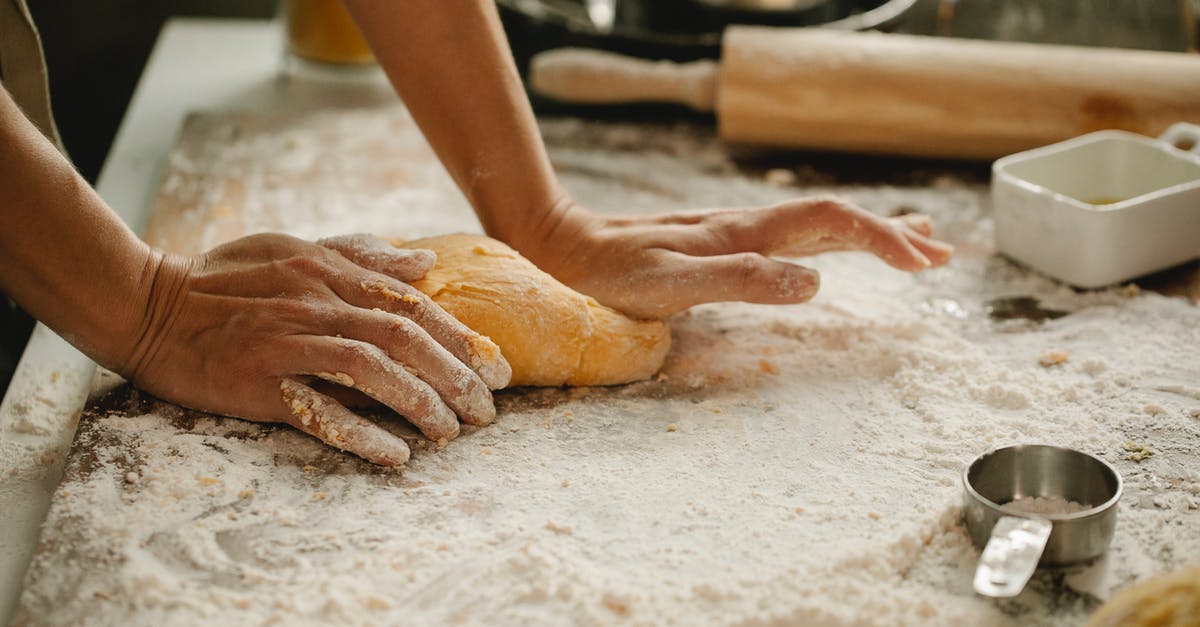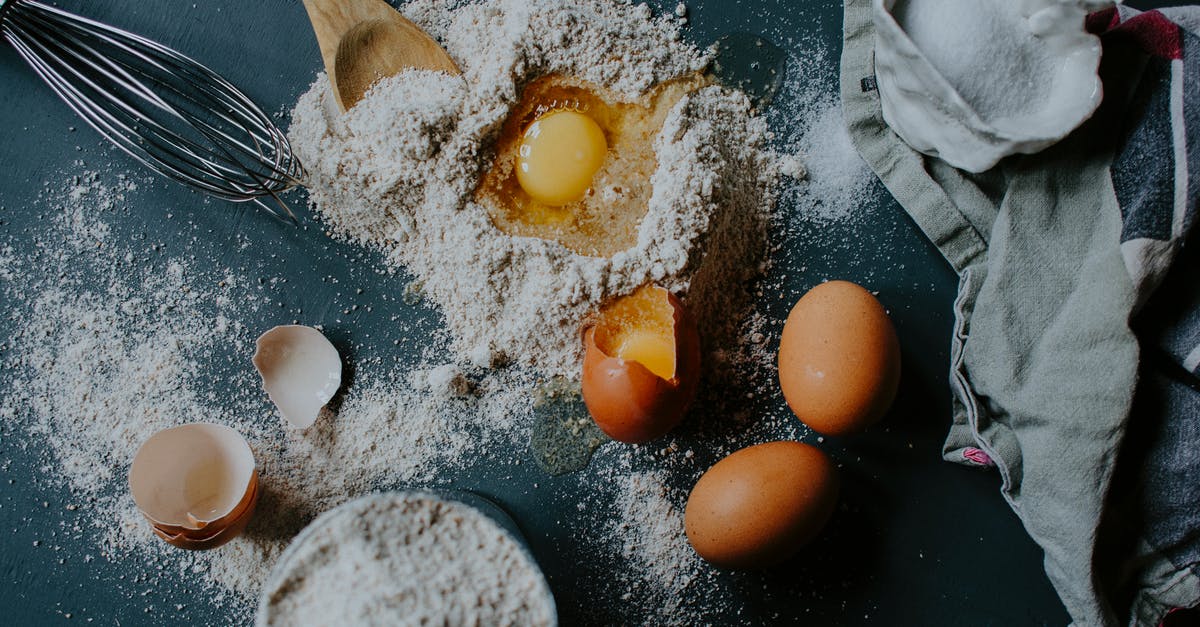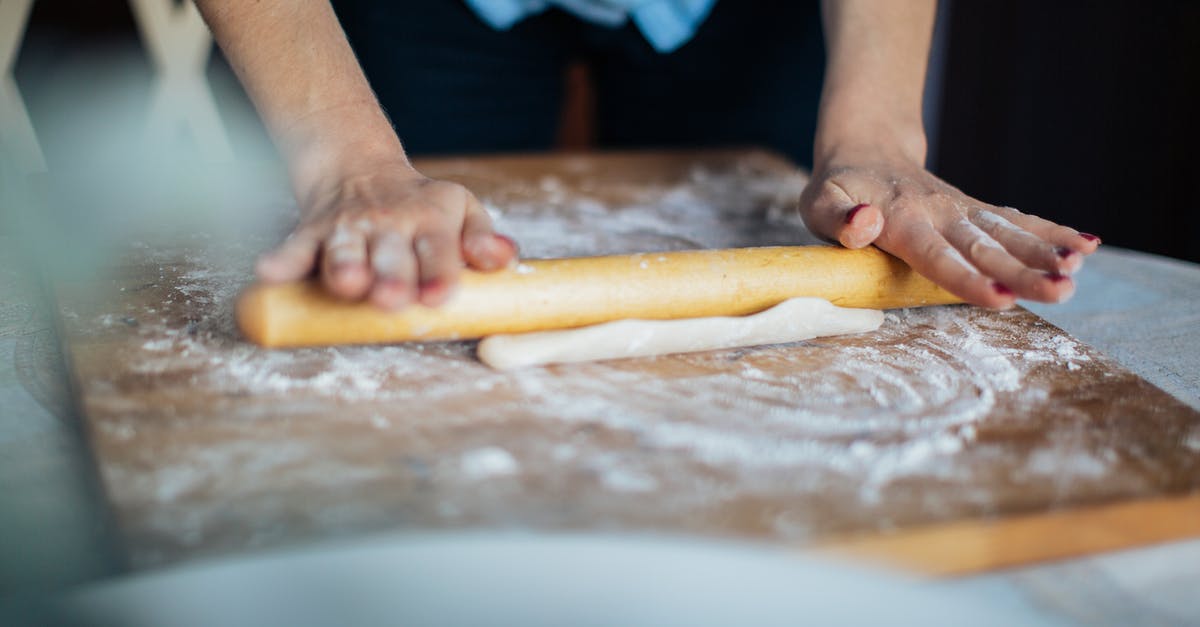When should I knead with oil and when with flour?

I have been experimenting with making bread and pastries and have tried kneading with both oil and flour. I have found that I tend to use flour with bread and yeast based loaves and oil with pastry dough.
I don't know what is best, though. I am slightly concerned that adding flour to a bread dough will mess up the flour water ratio, so is it better to use oil, and vice versa with the pastries (say a shortcrust pastry that already contains a form of fat)?
Is there some other factor that determines flour vs oil?
Best Answer
Both messes up the ratio, as you said, so you shouldn't use anything during kneading. You only need to use a little bit of something during shaping. With some pastries, the shaping is extensive and you get lots of the smoother worked into the dough; this is expected and desired (e.g. in strudel sheets).
Properly kneaded bread dough does not stick to anything, even if it started out very wet. So, if it sticks at the beginning, just continue kneading until it stops (I knead it between my hands then, not on a surface). When it is ready, it will not only stop sticking to your hands, but also pull the smear of the hand surfaces into itself, coming clean off them so you can work with it. (You will still have to clean your hands afterwards from gunk between the fingers and on the back of your hands).
When your dough is kneaded through, you want to form a good surface for the rising period. You can use flour, oil or water; you'll use so little that it doesn't really matter much. Just spread a thin film on your surface, shape the boule and put it into the rising bowl.
For the final rise, you want it to keep its shape when it's put into the oven. So, when you are giving it its final shape, you can use either flour or a starch to prevent it from sticking to whatever it is rising on. I knew somebody who swore by rice flour as producing the least stickiness, but use plain wheat flour myself. You can even lay it on a bed of flour; it is not getting pressed into it, so it won't absorb it and get hard. But you will have a layer of either raw or burned flour on the prepared bread.
An exception would be very oil-rich breads (at least half as much butter as flour). They do better when the final shaping is done in oil too.
For pastries and cookies, it depends on the type of dough. If it is supposed to be a hard dough, use flour. The strudel mentioned above is made in flour. If it is supposed to be a soft or tender dough, you can try shaping without any smoothening (for example many cookies will flow into a smooth shape during baking even if put onto the sheet as an unsightly pinched ball). Ugly sticky pastry doughs like pie crust can be rolled into submission if you roll them between two smooth silicone mats, but you can't get them very thin that way. If you need them at less than 4 mm, use flour, best in combination with the silicone. Plastic wraps also works, but you might have to use two pieces per surface when the crust gets wide.
If you have a dough which really feels half-liquid in your hands, shape with flour. Corriher's very light southern biscuits from Cookwise are a good example for such a dough.
Pictures about "When should I knead with oil and when with flour?"



Quick Answer about "When should I knead with oil and when with flour?"
An exception would be very oil-rich breads (at least half as much butter as flour). They do better when the final shaping is done in oil too. For pastries and cookies, it depends on the type of dough. If it is supposed to be a hard dough, use flour.Can I add oil to dough after kneading?
After the dough and water come together, I let it sit for a minute or two. I then add the oil and use the paddle to incorporate the oil into the dough. Once mixed well, I then switch to the dough hook for the remainder of the kneading.Do you knead before or after rising?
You can knead your dough very gently after its first rise in order to release excess gas and redistribute the yeast. However, it's not necessary to knead the dough at all if you already developed enough gluten before the first rise.What are the 3 steps to knead dough?
When an oil component is added to your bread dough, not only will it improve the crumb structure, but it will also make a softer and moist loaf. This is because the oil in the dough prevents water from evaporating during baking. As the water is retained, it keeps the baked bread moist and tenderized.How to Knead Dough
More answers regarding when should I knead with oil and when with flour?
Answer 2
This is one specific case where oil is the way to go:
I make high-hydration pizza dough for cracker-crust pizzas: thin and very crispy.
I'll do 70% hydration (70g water per 100g flour) and end up with something that's only a couple steps away from being a batter. It won't knead well like that--far too gloppy. And yet if you flour your surface you simply end up with 60% hydrated dough thanks to the huge amount of flour it will pick up.
I actually was putting about 8% oil in (8g per 100g flour), but I decided to put that not in the mixing bowl but rather use it in a kneading stage.
I can thus give it a full ten minute knead, and it ends up being as moist as when I started.
Sources: Stack Exchange - This article follows the attribution requirements of Stack Exchange and is licensed under CC BY-SA 3.0.
Images: Klaus Nielsen, Klaus Nielsen, Flora Westbrook, Elina Fairytale
